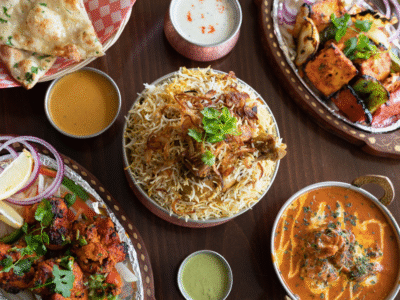Join us as we look to the food trends of the future, in which unusual innovations like insect restaurants stand alongside a return to tradition.
Food trends for 2024 are influenced by sustainability, innovation and a growing appreciation for local flavours. We’ve gathered insights from two culinary experts to highlight the expected trends that are likely to shape our eating habits in the coming year.
Insects are coming to London (and our homes)
Hurst introduces a bold and unconventional trend — the incorporation of insects into culinary creations. “We’ve already started to test these out on customers, and some have been more receptive than others,” says Sam Hurst, chief grazing officer at food delivery company Grazing. “It’s a good protein replacement, and things like crickets can be quite versatile, so it’s an interesting product to keep an eye on.” As sustainability takes precedence, insects offer a protein-rich alternative with a significantly lower environmental footprint compared to traditional meat sources. Eating insects might sound a little dystopian, but they’re eaten in many countries around the world. Here in the UK interest is at an all-time high — insect-based food company Yum Bug opened a pop-up restaurant in London last October, which completely sold out.
Watercress takes centre stage for nutrition
In August 2023, the humble watercress was declared the ‘healthiest vegetable’ in the world after a study by the Centers for Disease Control and Prevention (CDC) gave it a score of 100% for nutrient density. It outperformed other leafy vegetables such as chard (89%), spinach (86%) and double kale’s score of 49%. Tom Amery is managing director of the UK’s largest grower of watercress at The Watercress Company, Dorset. He says: “I’m on a mission to elevate watercress to its rightful place in our diets.
“It’s not only a delicious choice, but a responsible one for our health and the environment. Just adding watercress to our diet once a week will impart significant health benefits and improve our wellbeing.”
Grains are set to grow (in popularity)
“Grains — and buckwheat in particular — are going to be big in 2024. We’re seeing it used across all sorts of different dining areas,” Sam tells me. It’s welcome trend for the health conscious and gluten-free alike (although always check the ingredients as a few grains do contain gluten), as it works well in replacement of wheat in anything from bread to noodles. Known for its nutty flavour and nutritional benefits, it provides a versatile and wholesome addition to a variety of dishes. “You can toast it, make muesli with it, and add it as an ingredient to bulk out other dishes,” Sam explains.

Fish and meat eaters will look to local sources
Jermaine Harriott, head chef at The Greyhound in Beaconsfield, says, “We’ve seen a huge interest in fish such as coley and more rarely used varieties,” he says. “These are going to be increasingly popular as they’re from our shores and, due to their underuse, are more sustainable to cook with.” The emphasis on sustainability aligns with the global movement towards responsible sourcing and eco-conscious dining. Expect to see a surge in dishes featuring lesser-known fish varieties, showcasing the richness of our local waters.
He continues to predict a revival of interest in British game. “There is definitely more interest in the British game season,” he says. “People are becoming more attuned to the seasonal and flavour benefits of using this meat.” This culinary trend reflects a desire for authenticity and a return to traditional, seasonal ingredients. The unique flavours of game meats offer a departure from conventional choices, providing a richer and more nuanced dining experience.
Supermarket sales of vegetables will decrease
From gardens and balcony vegetable patches to ‘farm-to-table’ restaurants across the country, home grown produce is a prominent and sustainable food trend for 2024, gaining momentum among restaurants and individuals committed to reducing their environmental impact. Emphasising the importance of sustainability, Jermaine elaborates: “We have our own garden, which is brilliant so we can grow our own herbs and vegetables, reducing our carbon footprint and allowing us to control quality,” he says. This trend not only aligns with eco-conscious practices but also reflects a desire for greater control over the sourcing and quality of ingredients.













